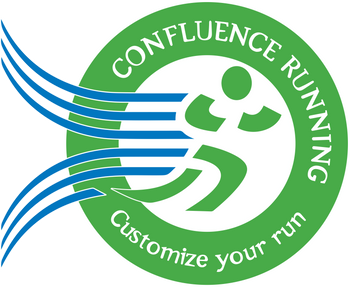Triathlon Training 101: The Importance of Hills & Proper Cold-Weather Gear

Triathlon Training Recap: Hill Workout & Cold Weather Gear Essentials
The Importance of Proper Gear: Comfort & Performance
Before diving into the workout, we had an important discussion about high-quality equipment, clothing, bras, and shoes, especially in cold weather.
-
Staying Dry is Key
- Whether you're running or cycling, staying dry is crucial for comfort and performance.
- After a workout, remove wet layers immediately to prevent getting chilled before heading back outside.
- Choose fabrics like polyester, nylon, or spandex for moisture-wicking properties. Avoid cotton—it absorbs moisture and keeps you wet.
-
Layering for Cold Weather
- Base Layer: Lightweight, moisture-wicking material to keep sweat off your skin.
- Mid Layer: Insulating layer to trap body heat (e.g., fleece or thermal running tops).
- Outer Layer: Windproof and water-resistant jacket to block the elements.
- Legs: Some prefer double layers (e.g., tights + lightweight overlayer) for added protection from wind and cold.
- Accessories: Hat, gloves, and sunglasses (even in the cold) help regulate temperature and reduce discomfort from wind exposure.
-
Comfort in Equipment = Better Performance
- Poor-quality gear leads to chafing, discomfort, and even injuries.
- Supportive sports bras are a game-changer—60% of women drop out of fitness routines due to discomfort from improper support.
- Investing in quality shoes, clothing, and accessories enhances endurance and enjoyment of training.
Looking for more running insights? 👉 Thinking About Running a Marathon? Are You Ready? | No Days Off? Not a Good Idea | Be Seen in Low Light Conditions 🚀🏃♂️
The Why Behind Hill Workouts
Today’s workout focused on hill repeats for strength, efficiency, and reduced injury risk.
-
Hill Training = Reduced Impact
- Running uphill naturally corrects your form—you're leaning forward and engaging your glutes and hamstrings.
- Less bouncing and pounding compared to flat ground = lower impact on joints.
- Longer ground contact time means the same impact is spread out over a longer duration, reducing stress on the body.
-
Hill Repeats Build Strength & Endurance
- Running at 80% effort uphill builds power and aerobic capacity.
- Your quads, glutes, and calves work harder, strengthening key muscles for cycling and running.
- Improved anaerobic threshold—you learn to tolerate and clear lactic acid more efficiently.
-
The Workout Plan
- Warm-up (~1 mile): Easy jog around the Event Center, West Gym, and East Gym.
- Hill Repeats (~8 minutes): Continuous up-and-down efforts on the hill between East Gym & Old Dickinson.
-
Effort Levels:
- Uphill: 80-85% effort (breathing hard, muscle fatigue).
- Downhill: Very slow recovery jog—allow full recovery for the next interval.
- Strides on the Track: Short bursts of fast running to improve turnover and efficiency.
Key Takeaways
- Dress smart—stay dry, layer effectively, and invest in high-quality gear for long-term comfort.
- Hill workouts are essential—they build strength, reinforce good running mechanics, and reduce injury risk.
- Hard days should be hard; easy days should be easy—proper recovery allows for better performance and long-term progression.
- Train smart—avoid the trap of pushing too hard on easy days. Even elite marathoners slow down dramatically on recovery runs.
Great work today, team! Keep training smart, stay consistent, and embrace the challenge of hills—they make you stronger! 💪🏽🏃♂️🚴♀️
Tags for Triathlon Training Hill Workouts
triathlon training, hill workout benefits, running hill repeats, triathlon run training, cold weather running tips, how to train for a triathlon, best hill workouts for runners, triathlon training for beginners, running gear for cold weather, how to run hills efficiently, triathlon strength training, injury prevention for runners, proper running form on hills, best winter running clothes, triathlon training tips, running cadence and efficiency, how to improve endurance running, best recovery techniques for runners, why hill workouts make you faster, triathlon coaching advice


